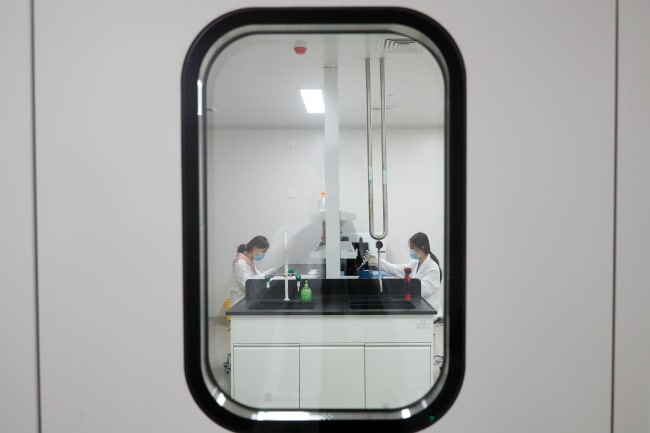Southeast Asians often view health care as an entitlement from their governments—like public education or state highways—and to many people, it may also seem unethical or politically indefensible to profit from someone's disease. Yet, private for-profit health care is deeply entrenched in this region, amounting to 53 percent of the $420 billion healthcare market in member states of the Association of Southeast Asian Nations (ASEAN), which is described in an earlier post.
A strong private direct provision of health care is common to all ASEAN countries regardless of their position on the ideological spectrum, from business-friendly Singapore to socialist Vietnam. What are the reasons for this, how has it shaped regional health systems, and how can governments harness it to achieve universal health coverage?

Tectonic Forces are at Play
The global shift in political economies decades ago laid the foundation for privately-owned, for-profit clinics and hospitals to proliferate in ASEAN. A wave of privatization of public services such as energy, communications, and utilities throughout Southeast Asia in the 1980s and 1990s eventually led to privatization of some social services since the mid-1990s. The Thatcherite economics and Reaganomics of the 1980s and the expansion of neoliberalism after the fall of the Soviet Union contributed to this orthodoxy.
As politics and public perceptions shifted, public goods began to be seen as ripe for privatization. Governments gradually succumbed to the temptation of relinquishing responsibility for public services, boosting revenue from the sale of state assets, reducing salary and pension obligations, and signalling friendliness to mobile global capital. The health care industry was no exception to this privatization trend, and responsibility for certain functions within the industry—like facilities management or logistics—has already shifted to private companies. Southeast Asian nations have stopped short of completely privatizing or commoditizing their health delivery services, however, for political legitimacy or feudal reasons.
When health care becomes a profitable business, it attracts more human and financial capital
Secondly, the juggernaut nature of private enterprise is self-reinforcing in several ways. When health care becomes a profitable business, it attracts more human and financial capital. With size comes lobbying by professional groups and businesses for better investment terms and more deregulation. Supplier-induced health care demand could happen when health providers stimulate artificial demand to recoup or justify their investment. These are powerful, perhaps irresistible, forces. Governments are not immune from these forces. Health tourism is increasingly seen as a revenue generator in Southeast Asia (contributing $8 billion in revenue from nearly four million people who traveled abroad to seek treatment in 2018 alone). Regional governments provide many incentives for private investment in health tourism. As an outlier, the Malaysian government even owns private, for-profit hospitals through government-linked corporations, which leads to potential conflicts of interest.
Thirdly, governments are increasingly struggling to deliver high quality and sophisticated public services to the increasingly larger and more demanding Southeast Asian urban middle class. The 350 million people in that demographic want health care that is efficient, responsive, convenient, or comfortable enough for their liking, and they are willing to pay large out-of-pocket sums for private healthcare for those reasons. Moreover, some are willing to pay extra because expensive private hospitals are sometimes seen as status symbols.

The state's physical absence from the sprawling archipelago of Indonesia and the Philippines or in rapidly urbanizing cities of Indochina also created a vacuum where the private sector has stepped in to serve lower socioeconomic classes. The working class might not afford expensive surgeries and medicines from the private sector but will enjoy at least a basic package of health services.
Now: A Permanent Feature
Health care delivery in Southeast Asia now relies on significant private enterprise, and seeking private care is now present across all socioeconomic levels [PDF] not just the very rich. This has shaped the way healthcare is financed and organized. Aside from the standard issue private hospital, innovative business models have been launched, such as corporatized public hospitals in Singapore and Malaysia, self-financing ("Swadana") public hospitals in Indonesia with its own commercial section that allows retention and use of patient revenues, or other public–private partnerships [PDF].
No matter how clinics or hospitals are organized, the private sector will compete with the public sector to hire doctors and nurses, a problem compounded by the brain drain of health professionals to countries outside ASEAN. Dual practice in Cambodia, Indonesia, Malaysia, Thailand and Vietnam allows highly prized but relatively low-paid doctors and nurses to supplement their salaries in the private sector while continuing in public service.
The withdrawal of the middle class from public services… can slowly tear a nation apart
Private health care can benefit consumers through more choice, more innovation and (theoretically) lower prices due to competition. It can also be more responsive to patients' desires and preferences, which is one of the World Health Organization's goals for a health system. It can bring cutting edge technology to Southeast Asia, although supplier-induced demand makes this a double-edged sword because the high costs of initial purchase may be used to justify unnecessary utilization. In macroeconomic terms, private sector health care is a source of tax revenue, new jobs, and economic growth. It can alleviate congestion in public health care services by providing an alternative for some patients (e.g., the Philippines [PDF]) or deliver services in places where the state simply cannot (e.g., Indonesia). In theory, that would ultimately benefit public care by allowing governments to more equitably target their limited budgets to poor and marginalized communities.
In practice, however, private provision of health care can also be dangerous. A two-tiered system [PDF] stratified by the ability to pay is both a cause and a consequence of inequality. As health systems are also nation-building instruments, the withdrawal of the middle class from public services (not just in health, but conceivably in education, security services, or housing) can slowly tear a nation apart. If citizens resort to private solutions and become less willing to pay taxes in exchange for public services, this is the death knell for government legitimacy.

Private healthcare is also riven by multiple market failures which Southeast Asian governments don't always correct effectively. Moral hazards, information asymmetries, customer irrationality, captive markets, and high entry barriers all feature prominently in this region. The culturally more paternalistic Southeast Asian societies could worsen the moral hazards and information asymmetry because patients are less likely to question their doctors.
Harnessing the Private Sector
Short of nationalizing private hospitals and clinics, the question of "should we have private sector health care in ASEAN?" could be moot because private sector care is already so well entrenched it's hard to contemplate anything else. Therefore, public discourse on achieving universal health coverage should focus on three areas.
Health ministries have the public duty, the stature, and the resources to correct market failures
One, ASEAN nations should begin a national debate about how private health care is provided. It has grown organically without much debate and is now so normalized that citizens expect the market to provide solutions. The deafening absence of official positions on the correct role and size of the private sector must end, to be replaced by coherent national health policies that utilize the private sector as a tool to achieve universal health coverage.Two, health ministries must lead and regulate the private sector more aggressively, instead of only governing and administering the public sector. For various reasons, including deregulation pressure from lobbyists as well as the sheer Herculean task of operating a giant public health care system, health ministries have shrunk from leadership of the private sector. This is a mistake, as health ministries have the public duty, the stature, and the resources at their command to correct market failures and to align public and private providers' incentives as much as possible.
Three, once health ministries commit to actively governing the entire health system and leading vigorous public debate, ASEAN nations should then—and only then—contemplate how to meaningfully integrate the public and private health care systems. This does not necessitate nationalization. The administration and governance of both sectors can remain separate, but improvements such as common regulations and regulators, pooled purchasing, or economies of scale can be implemented. Such integration could avoid duplication and waste, lower costs and improve outcomes for the consumer, and still allow the private sector to remain vibrant.
Health systems cannot escape the mega-trend of private sector involvement in public services. For better or worse, private healthcare has shaped the landscape, organization, and financing of Southeast Asian health systems. To make this marriage work in the long run, the private sector must be made subservient to society and the public health care system, not the other way around.












